Home> Company News> Determination of 11 elements in herbs by microwave assisted extraction and inductively coupled plasma mass spectrometry
- AddressNo.4087 SHAHEXI ROAD, TIAOQIAO DISTRICT,JINAN,CHINA
- Factory AddressNo.4087 SHAHEXI ROAD, TIAOQIAO DISTRICT,JINAN,CHINA
- Worktime9:00-18:00
- Phone(Working Time)0531-85064681
- Phone(Nonworking Time)86-18660125156
- Fax0531-85064682
Determination of 11 elements in herbs by microwave assisted extraction and inductively coupled plasma mass spectrometry
2018-10-19 09:17:14Abstract: Eleven metal elements in leaves of Cyclocarya paliurus, Gentiana Gentiana and Qinpi were determined by ICP-MS. The effects of temperature, time and mass-volume ratio of material to liquid on the leaching efficiency were studied by orthogonal design with CEM Star-II focused microwave extraction system. The results showed that temperature was the main factor affecting the extraction efficiency, and the extraction time had obvious effect on some elements, but the material-liquid ratio had little effect on almost all elements. The dissolution rate of vanadium under microwave extraction is very low.
Microwave drying equipment is a sensitive and effective analytical method. For the analysis of herbal drying equipment, the pretreatment of samples is the main factor affecting the accuracy of analysis. In order to make the analysis fast and accurate, there must be sample pretreatment method which can be adapted to the analysis of herbal drying equipment.
Traditional sample digestion technology takes a long time and is cumbersome and sometimes dangerous. Microwave technology has been greatly developed since it was proposed to digest biological samples in a household microwave oven during wet ashing. With the advent of closed microwave technology, samples are digested under high temperature and high pressure. Compared with traditional sample pretreatment technology, closed microwave digestion has the advantages of fast digestion speed, less volatilization loss, simple operation, safe use and good digestion reproducibility. However, the closed microwave digestion technology can not be applied to the analysis of element speciation, because the high temperature and high pressure environment will destroy the morphology of organic compounds in the sample, only the total amount of elements can be obtained.
At present, most Chinese herbal medicine is still in the classic way of decocting. It is significant to understand the utilization efficiency of active ingredients (including trace elements) by means of decoction or extraction. In this work, the low power Open-Focus microwave extraction system of CEM Star II was used to prepare the samples of traditional Chinese medicine in order to obtain useful information in a short time. This system has two independent cavities, which can control the mode of operation of one of the cavities without affecting each other. There is a "chopper plate" between the waveguide tube and the working cavity. When the chopper plate is opened, the microwave enters the cavity and acts on the sample solution. When the chopper plate is closed, the microwave does not enter the cavity. The partial opening of the chopper can also be used to control the proportion of the microwave entering. The temperature is controlled by the temperature feedback information of the cavity to ensure the repeatability of each extraction. The system can be used for some special purposes, such as selecting the best conditions for non-destructive element morphology analysis. In this work, several Chinese medicines (such as lancet, Gentiana and cortex Fraxini) were selected for the experiment. Orthogonal design experiment was used to optimize the conditions of microwave extraction (temperature, time, mass-volume ratio of material to liquid), and the best extraction conditions were selected. The purpose of this work is not only to observe the extraction efficiency, but also to provide the preparatory work for further analysis of element morphology.
The leaves of lancet are collected from Xiushui County, Jiangxi. Gentiana and cortex Fraxini are marketed herbal samples. The sample was crushed and sieved so that the diameter of the particles was less than 0.25 mm, and the baking temperature was 4 h before (80 + 2) centigrade.
Microwave digestion weighs the dried sample about 0.4 g. Put the sample into Teflon dissolving tank, add 10 mL concentrated nitric acid, pre-digest it overnight, then install the digestion device according to the operation requirements, put it into microwave oven for digestion. Samples were dissolved in 3 stages (about 15 *102 kPa) for 3 minutes, cooled naturally and then re-treated with 5 mL concentrated nitric acid. After cooling, 2 mL 30% (phi) H2O2 was added, and then microwave treatment was carried out in 3 stages for 3 minutes. After cooling, the samples were removed and the volume was fixed to 50 mL with 2% (phi) nitric acid. Shrub branches and leaves (GBW07602) and apple leaves (SRM1515) were digested in the same way, and three copies of each sample and blank were prepared.
Microwave water extraction weighs about 4 g of dried sample into quartz extraction bottle, inject the required volume of ultra-pure water, immediately put into the microwave extractor for processing. Processing method: within 5 minutes to raise the temperature to the required temperature, and to maintain the required time, immediately take advantage of hot filtration, cooling and moved into 100 mL capacity bottle, with ultra-pure water volume to 100 mL, 1 in 3. Ultra pure water is blank.
The processed samples were determined by ICP -MS. Optimized instrument operating parameters
In this paper, HNO3 -H2O2 digestion system was used to analyze the actual samples. Under the selected digestion conditions, the recoveries of each element in the standard reference substance were between 87.8% and 110%, which indicated that the digestion and determination method used in this experiment was feasible. The relative standard deviations of the same sample were all less than 5%.
Experimental design: this method adopts 3 x 3 orthogonal experimental design, and randomize the level of the factors. L9 (34) orthogonal table was used to arrange experiments. The samples of Chinese herbal medicines were divided into nine conditions and filtered by quantitative filter paper. Eleven elements of magnesium, manganese, zinc, vanadium, chromium, nickel, copper, calcium, aluminum, iron and lithium were determined by ICP-MS. The dissolution rate of 11 elements in cortex Fraxini is listed.
The corresponding data in Gentiana and lancet leaves are not listed. The results of orthogonal design experiments were analyzed by variance analysis.
(1) The dissolution rate of vanadium is very low under microwave extraction, which may be related to the complexation of vanadium with traditional Chinese medicine, making it difficult to dissolve.
(2) For the leaves of Cyclocarya paliurus and Qinpi, the significant influencing factors of 10 elements are A, i.e. microwave heating temperature; for a small amount of elements, factor B also has a certain impact, such as chromium, calcium and iron in Qinpi, zinc in Qingqianliu; factor C is not a significant influencing factor. For different samples and different elements, the optimum extraction conditions are different. For example, the optimum extraction conditions of Al in Qinpi are A1B3C3, that is, the microwave heating temperature is 100 C, the heating time is 20 min, and the volume ratio of material to liquid is 1:10 (g/mL). For Gentiana gentiana, the influence of factor B is relatively large, but not significant, only the significant factor of Cu is A, factor C is non-influential factor, the dissolution rate decreases with the increase of temperature; the best dissolution condition of Cu is A3B3C2, that is, microwave heating temperature is 40 C, heating time is 20 min, the volume ratio of material to liquid is 1. 5 (g/mL).
(3) the dissolution effect is different for different elements in the same sample. Therefore, it is necessary to find the best dissolution conditions for each Chinese herbal medicine or a certain element in the dissolution analysis of different Chinese herbal medicines. It can be seen from the experimental data that the general trend of the dissolution of most metal ions is: temperature is the main factor affecting the dissolution of metal ions, but the material-liquid ratio has little effect. Therefore, for the extraction of metal ions, a precise and stable temperature is needed, without considering the effect of solvent amount. Regarding the classical method of taking Chinese herbal medicine, no matter what dosage form the medicine is taken, it is leached, absorbed and acted on the disease in some form in the body water environment. Therefore, the current work is mainly limited to the exploration of Chinese medicine in the dissolution of water system. For the study of metal forms in traditional Chinese medicine, special organic solvents are needed for the dissolution of some special forms, and the dissolution properties of metal ions in non-aqueous systems such as ethanol, methanol, acetonitrile and other organic systems should be studied in the future. Morphological analysis lays a solid foundation.
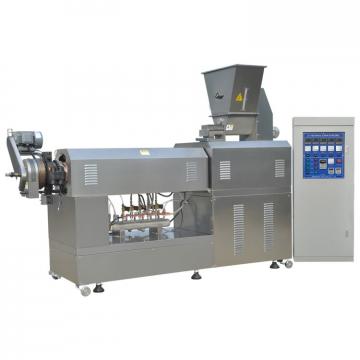 Factory Fruit and Vegetable Processing Machines/Quick Frozen Line/Food Processing Production Line for Daylily Production Line with High Output
Factory Fruit and Vegetable Processing Machines/Quick Frozen Line/Food Processing Production Line for Daylily Production Line with High Output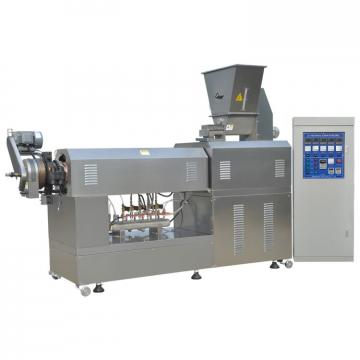 Factory Direct Sales PS Styrofoam Food Container Production Line
Factory Direct Sales PS Styrofoam Food Container Production Line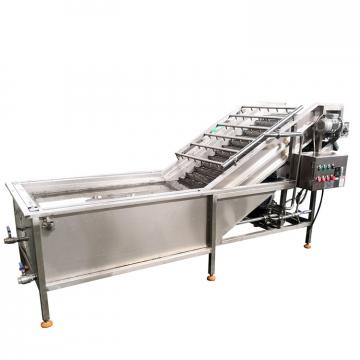 Complete Pure / Mineral Drinking Bottled Water Production Line Factory in Beverage / Food Area
Complete Pure / Mineral Drinking Bottled Water Production Line Factory in Beverage / Food Area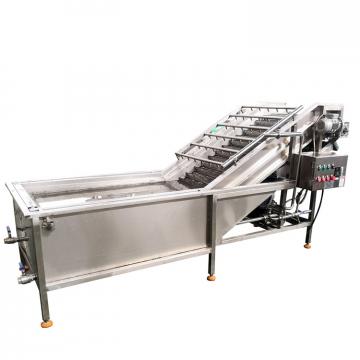 Cheetos Fried Food Production Factory Extruder Processing Line
Cheetos Fried Food Production Factory Extruder Processing Line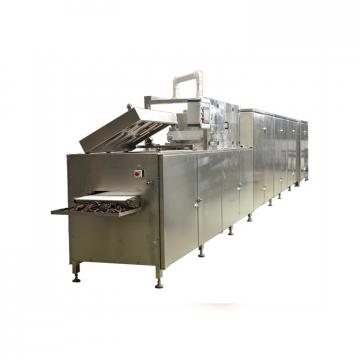 Automatic Mini Food Factory Macaroni Processing Line Pasta Production Line
Automatic Mini Food Factory Macaroni Processing Line Pasta Production Line
